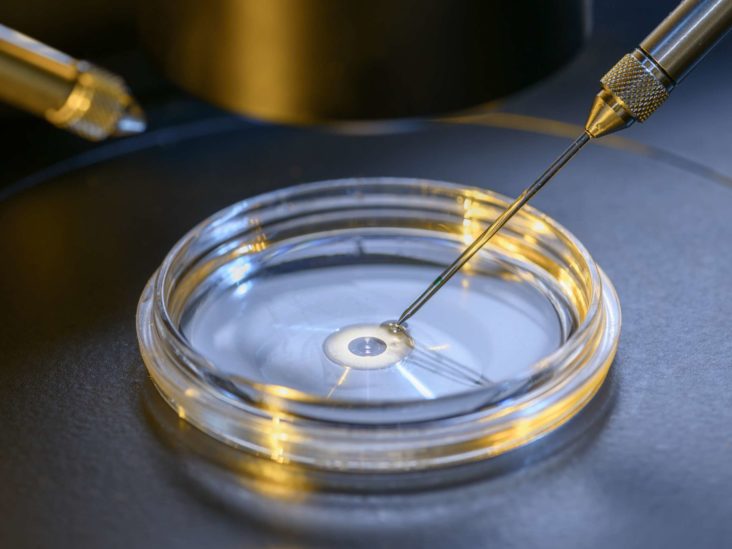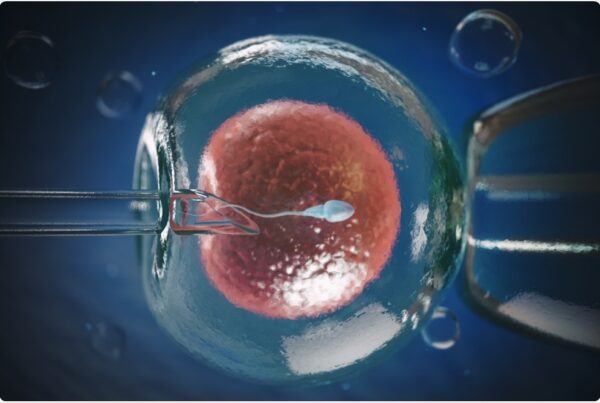Non-invasive Preimplantation Genetic Testing for Aneuploidy (NiPGT-A) is a novel technique used in invitro fertilization (IVF) to assess the chromosomal makeup of embryos without removing cells for biopsy. The technique, which avoids potential risks associated with traditional biopsy procedures, analyzes the culture medium surrounding the embryo which contains shed fetal DNA. By examining this DNA, the embryo’s chromosomal health can be assessed and possibly identify potential abnormalities.
The NIPGT-A procedure although relatively new, is available in Nigeria. It is done after fertilization has occurred and before implantation takes place. Reproduction is normally divided into two parts – the fertilization process and then the implantation process. While IVF takes care of the fertilization process by bringing the sperm and the egg together, the embryo implantation takes place post IVF, and as stated above, the NIPGT-A test must be done before the embryo is placed in the uterus
Genetic testing is essential for different reasons, specifically to check the number of chromosomes, which means the number of chromosomes which are the 23 pairs of strands in the nucleus of each cells. When there is an abnormal number, it is possible to tell. The 23 pairs of chromosomes should come as one pair – one from each parent, so that’s why there are 23 pairs. The last pair is the sex chromosomes.
Looking at these chromosomes the numbers are obvious. Sometimes there could be only one instead of two, or three instead of two, this is known as aneuploidy, that is, abnormal number of chromosomes. It is known that this is the commonest reason why there is either implantation failure or even recurrent miscarriage.
A few years the only way to screen for aneuploidy traditionally was to take a sample from the embryo and then test it to see whether the chromosomes are normal in number or in structure. But today, the non-invasive method of testing for aneuploidy is available. There is now a non-invasive way to do it and there’s no need to take the sample from the embryo anymore. The same results of being able to tell whether the embryo can become a baby or not can be obtained without the added risk
If the embryos have abnormal number of chromosomes they cannot become normal babies. For some instance, some babies with disorders such as Down syndrome have chromosome numbers that can still sustain life, but also turn out to give abnormalities in the babies. So that is why it is so important to be able to screen for aneuploidy.
To check for chromosome abnormalities in embryos, it starts with the egg and sperm. An embryo is being formed by bringing an egg and sperm together, and then culturing in the laboratory. Before that, it is necessary to check if the embryo is chromosomally normal, such that there are 23 pairs of chromosomes including the sex chromosomes.
The check confirms if this number of chromosomes have the required copy, ideally there should be two per chromosome number, so when there is one, that means one chromosome is missing or when there are three, that means there is an extra one and this actually has its impact on individuals in terms of the genetic constituents.
Methods for checking for this chromosome abnormality could be invasive or non-invasive. After culturing the embryos for 5-6 days in the laboratory, and then taking part of the embryos, at that stage, they are called the blastocysts. NIPGT-A has made it very easy such that there is no need to touch the embryo. Everything needed is in the medium, where the embryo is placed in the incubator.
The non-invasive method has made it very easy such that the fear of damaging the embryo is not there. Just place the blastocyst in the medium, screen and check the medium for the chromosome abnormalities and the embryo is frozen in a safe state. Nordica Lagos has actually gone through the validation protocol and is certified to conduct NIPGT-A.
As a rule, the results from the invasive and non-invasive methods must be the same. For Nordica, the validation process is precise, the minimum concordance score is 80 percent, and success rate is 100 percent. It is a plus for patients and clients to be able to screen their embryos for genetic abnormality without the invasive method.
It explains why there are better success rates when doing IVF with a 30-year-old than with a 38 year old. The prevalence of abnormal chromosomes in the 38-year-old will be higher than in the 30-year-old and that’s why the success rate is lower in the 38-year-old. If you are below 30, your aneuploidy rate is about 20 to 25 percent and for the person at 42years the aneuploidy rate is about 80%
But when you are 42 and above your aneuploidy rate is about 80, so that is fixed. So, what we are now trying to do is how to identify this aneuploidy and the embryos that are not going to become babies.
Instead of taking biopsies, NIPGT-A analyses the medium in used to culture the embryos. Part of the advantages is the limited risk for the embryos. There is no chance of damaging the embryos either when trying to take a sample from it and it lowers the cost of doing the test over time.
NiPGT-A offers several advantages over traditional preimplantation genetic testing that involves embryo biopsy. In addition to the reduced risk of embryo damage by analysing shed fetal DNA in the culture medium instead of taking cells directly from the embryo, there is less emotional stress for couples
In a nutshell, couples do IVF for the primary reason of having their own babies, so this non-invasive method is improving the success rate of IVF, because embryos that are most likely to become babies are selected. It also reduces the time to achieve pregnancy when you do IVF, and determines how the best embryos can be selected for you.





